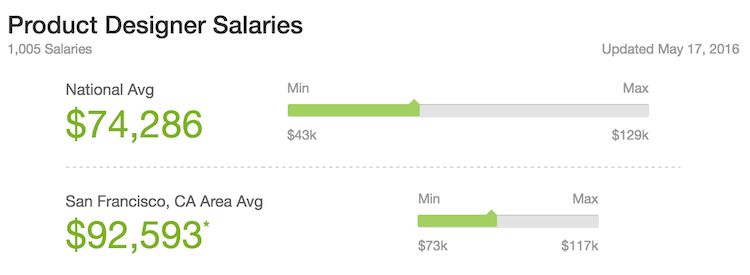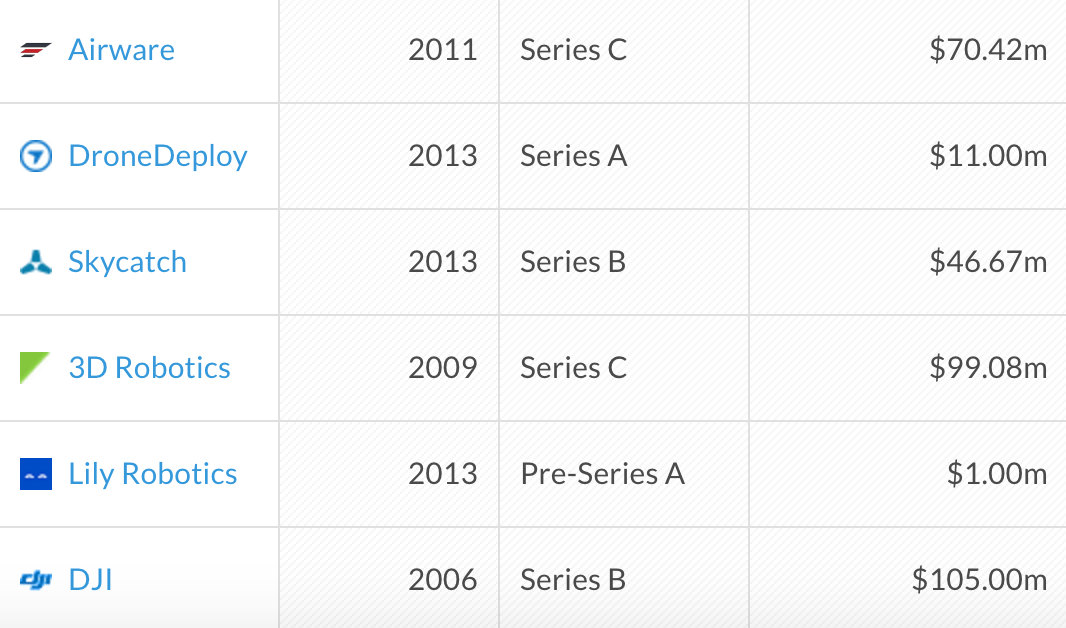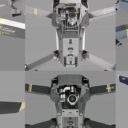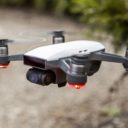So You Want to Work With Drones: Product Designer
 Stephen Garland
Stephen Garland
Role: Product Designer
Company: 3D Robotics
Education: Carnegie Melon, Masters in Interaction Design
Specialties: product design, rapid prototyping , UX/UI
Welcome back to So You Want To Work With Drones, where we interview members of the rapidly-evolving drone industry and ask them what it’s like to work with drones and how others can follow in their footsteps.
This week we sit down with Stephen Garland, a Product Designer at 3D Robotics and one of the lead architects behind 3DR’s newest consumer drone, the Solo.
What does a Product Designer do?
The job of a Product Designer is never over. Product Designers formulate the initial product inception and drive this vision all the way to the product’s first shipment. But even after the product is launched, Product Designers go back and iterate however they can to keep improving the current product and gather intel along the way for the next version.

Product Designer on the Job: Stephen Garland
Q: So Stephen, how did you end up becoming a Product Designer for drones?
[edsanimate_start entry_animation_type= “fadeInRight” entry_delay= “0” entry_duration= “2” entry_timing= “linear” exit_animation_type= “” exit_delay= “” exit_duration= “” exit_timing= “” animation_repeat= “1” keep= “yes” animate_on= “scroll” scroll_offset= “75” custom_css_class= “”]
I studied industrial design, interned as much as I could, and then went to grad school for interaction design. After that I came out to the Bay Area to try out start up life and eventually had the opportunity to work at a drone company. The major through line for me has always been making a case for simplicity and ease-of-use, even on complex products. Luckily drones are pretty darn complicated, and so design nerds are needed to try to make them user friendly and intuitive.
[edsanimate_end]
Q: Can you tell us what the the day in the life of a Product Designer looks like?
[edsanimate_start entry_animation_type= “fadeInRight” entry_delay= “0” entry_duration= “2” entry_timing= “linear” exit_animation_type= “” exit_delay= “” exit_duration= “” exit_timing= “” animation_repeat= “1” keep= “yes” animate_on= “scroll” scroll_offset= “75” custom_css_class= “”]
A lot of prototyping usually. If we’re working on a part for a vehicle, controller, or some aspect of the App UI we build a lot of rough prototypes and then test them out. These may be 3D printed, sketches, or full on working prototypes (full working photos are usually done alongside a whole team of designers and engineers.) First we test them ourselves, then we try to get as many people who are new to the product to try them out.
After we get input from trying out prototypes we take that back and refine our first ideas. Basically the goal is to repeat this process until you have something that is easy to use and meets the users needs.
[edsanimate_end]
Q: What skills are needed as a Product Designer? What tools do you use?
[edsanimate_start entry_animation_type= “fadeInRight” entry_delay= “0” entry_duration= “2” entry_timing= “linear” exit_animation_type= “” exit_delay= “” exit_duration= “” exit_timing= “” animation_repeat= “1” keep= “yes” animate_on= “scroll” scroll_offset= “75” custom_css_class= “”]
Opinions vary on how to word this for sure, but I would say it’s empathy. You’re usually not designing for you, so you need to be able to design for what a given user needs in a product. For example, to design for cinematographers, you need to be able to get into their shoes. At the same time, you need to be able to filter the feedback you get, and take that back to the design and engineering team so it can be turned into product requirements and design concepts.
After that, you need drawing, rapid prototyping, and CAD skills to create the actual design spec documents needed to have parts made. Typically it’s a lot of CAD work. My tools of choice are Solidworks for CAD and Adobe Illustrator for UI.
[edsanimate_end]
Q: What is your favorite part about being a Product Designer for drones?
[edsanimate_start entry_animation_type= “fadeInRight” entry_delay= “0” entry_duration= “2” entry_timing= “linear” exit_animation_type= “” exit_delay= “” exit_duration= “” exit_timing= “” animation_repeat= “1” keep= “yes” animate_on= “scroll” scroll_offset= “75” custom_css_class= “”]
I think the challenge of making a very complex system into something that is simple is what attracted me. Essentially that’s what you do in any kind of product design, but this field offers a heaping portion of complexity that designers need to boil down to a sweet and simple experience based on a particular user’s need.
[edsanimate_end]
Q: What advice would you give to an aspiring Product Designer for drones?
[edsanimate_start entry_animation_type= “fadeInRight” entry_delay= “0” entry_duration= “2” entry_timing= “linear” exit_animation_type= “” exit_delay= “” exit_duration= “” exit_timing= “” animation_repeat= “1” keep= “yes” animate_on= “scroll” scroll_offset= “100” custom_css_class= “”]
If you are thinking about college choices, I would say look at Industrial Design or Mechanical Engineering as a major. If you are looking at this post college, I would say start building prototypes and get involved with companies and groups that are doing what you are passionate about.
[edsanimate_end]
Q: What are some books or resources you would recommend?
[edsanimate_start entry_animation_type= “fadeInRight” entry_delay= “0” entry_duration= “2” entry_timing= “linear” exit_animation_type= “” exit_delay= “” exit_duration= “” exit_timing= “” animation_repeat= “1” keep= “yes” animate_on= “scroll” scroll_offset= “75” custom_css_class= “”]
For getting involved with drones right away: the very website you are looking at now, DIY Drones, and company Facebook pages are a great start.
In terms of learning to do product design, the beginning resource I’d recommend is The Design of Everyday Things. Yes, just about everyone will tell you to read that one, but it is for a good reason. To make something better, you have to stare at it, poke at it, and hit your brain against it for long periods of time. -Then rinse and repeat until you are adding real value to the thing you are working on. If you’re into that kind of thing, then product design is a great world to dive into! 🙂
For sharpening your CAD skills, I would say one of the best things to do is to start building products you have laying around in CAD from scratch. You’ll learn a lot about how to use the software, and you’ll learn a ton about all that goes into making even the simplest parts. Above all, enjoy it!
[edsanimate_end]
Top Drone Startups in the Bay Area
Stay tuned for more interviews!
Drones are complex machines. They require a ton of smart people from many different backgrounds in order to produce a polished and dependable product. From software engineers to hardware engineers, and product designers to industrial designers, drones are built through a highly coordinated team effort.
Stay tuned for more interviews with others from around the drone community.







0 Comments
Trackbacks/Pingbacks